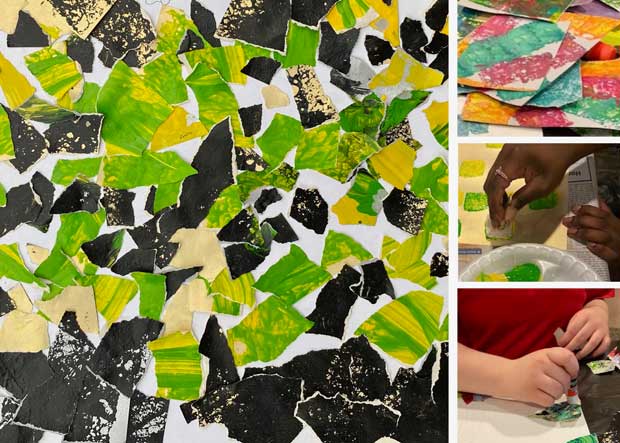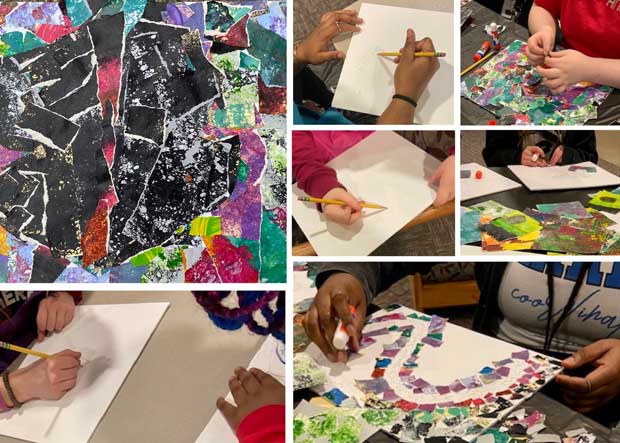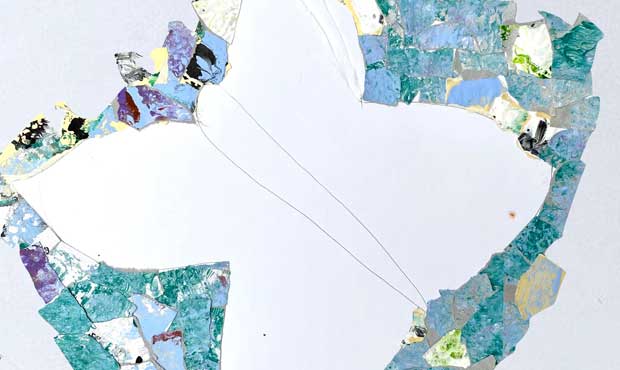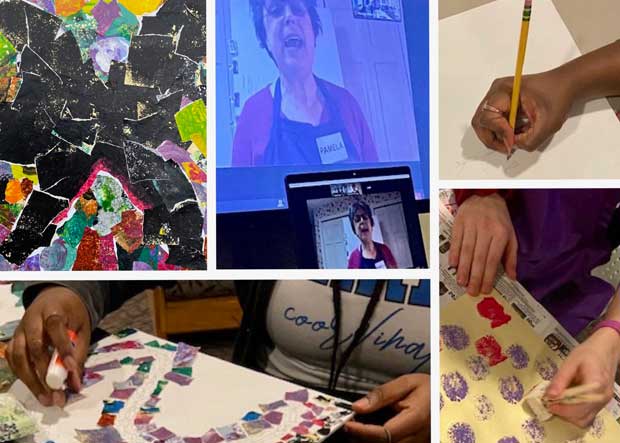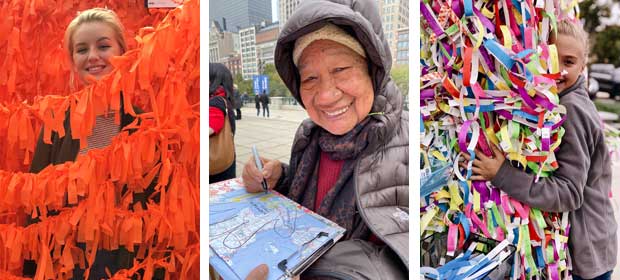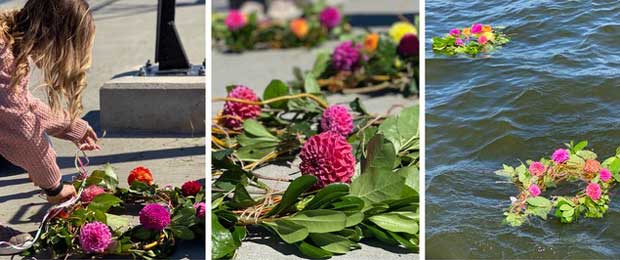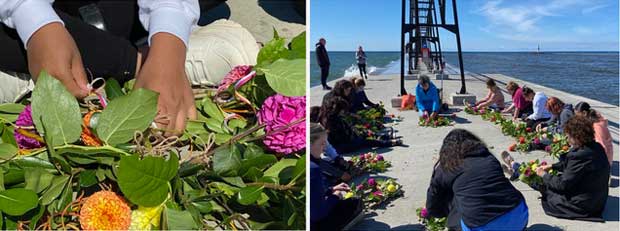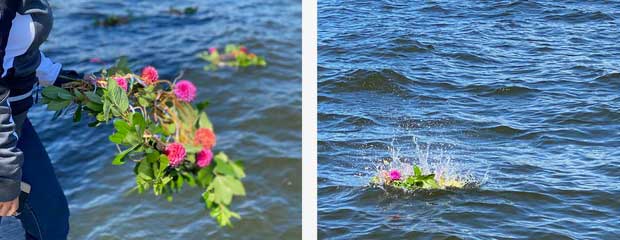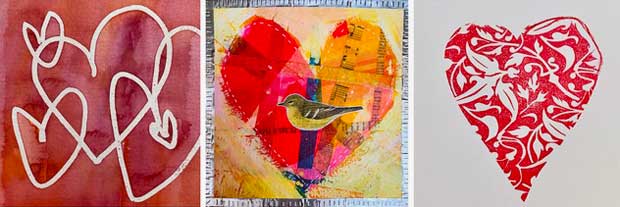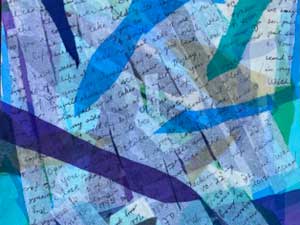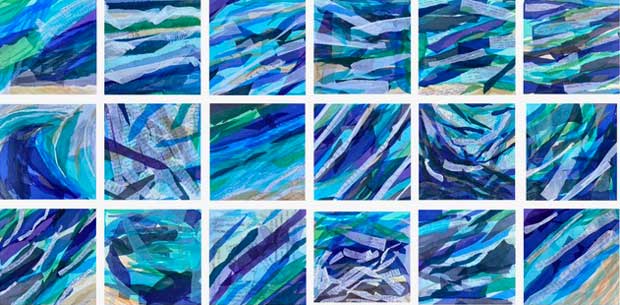The Next Season of Growth
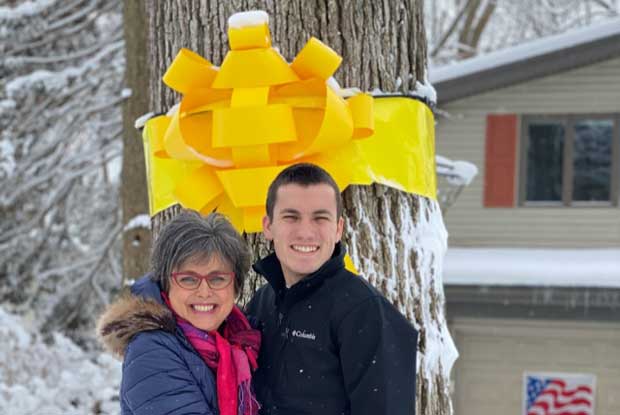
Military families tie yellow ribbons around trees to welcome soldiers returning home. Continuing this tradition as a veteran’s wife, a military mom, and an artist, I designed the art exhibit Yellow Ribbon, which expanded into additional veteran art workshops for artists and non-artists, sponsored by Kent County Veterans Services.
Because of the veteran’s invisible battles with PTSD, military sexual trauma, or suicide—along with prolonged isolation during a pandemic—the projects promote hands-on involvement and a sense of community. Years ago, while living on a remote military base, I struggled with a debilitating sense of loneliness. Veterans also experience isolation when re-entering civilian life and encountering a disconnected public. The spirit of Yellow Ribbon continues by encircling each veteran with creative care, by exploring new aesthetic opportunities, and by providing a friendly space to experience positive social support.
Kent County veterans welcome: No artistic talent required.
Bring your smile and your unique perspective. Swearing allowed.
May Art Workshop – Tissue Paper Leaf Collage
Trees adapt to their environment incredibly well. With the change of seasons, trees let go of their dead leaves instead of clinging to them. In doing this, they make way for the new leaves to form and eventually grow. As humans, we tend to hold on to our dead leaves–toxic thoughts, adverse relationships, or bad habits. Our tendency to rehearse negative experiences again and again inhibits our growth and limits our potential.
For the May healing art workshop, we will create abstract leaf collages with Japanese rice paper and tissue paper. The project focuses on form and use of space, while creating colorful abstract leaf shapes that depict beauty and hope. Throughout life, as we learn to adapt and let go of dead leaves like the trees, we promote emotional resilience and make space for the next season of growth.
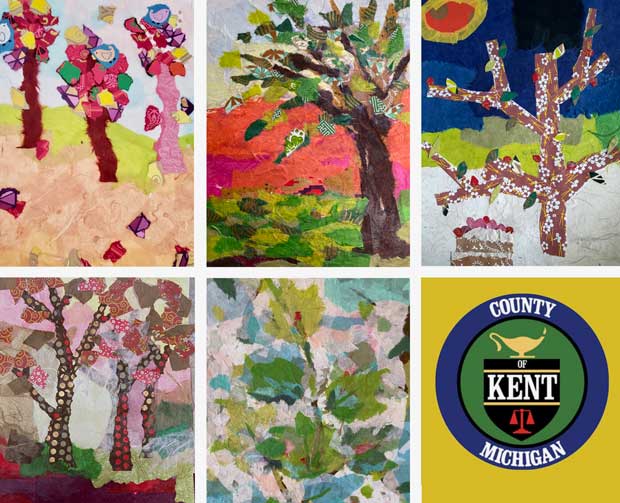
June Art Workshop – Plexiglas Tree Reflections
As trees grow, their lower branches often die from the lack of sunshine. When the branches fall off, new cells grow around the wound, creating a knot. Though the knot looks like an imperfection or scar, it provides new pathways to sustain the rest of the tree with nutrients and water. When facing adversity, we also need to find new ways to adapt and move forward.
For the June healing art workshop, we will paint abstract trees with acrylics on plexiglass panels. The project focuses on line, shape, and color to create harmony and balance. If we embrace our imperfections and scars, these important life markers, like the tree knots, signify strength and regeneration.
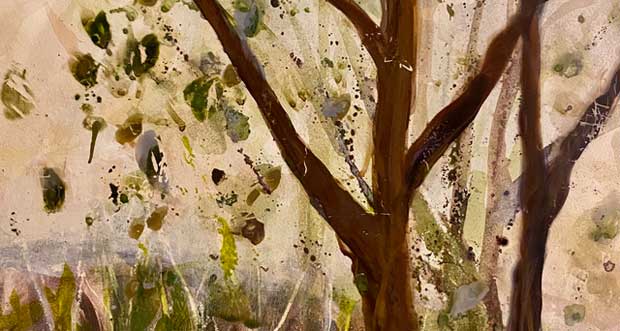
Note: Workshop participants will have the option to display their artwork at our August veteran art exhibition.

